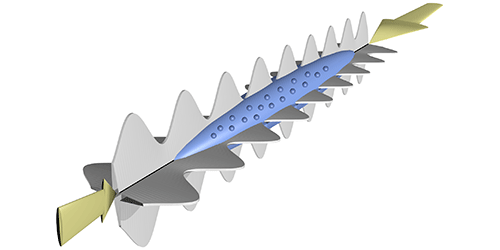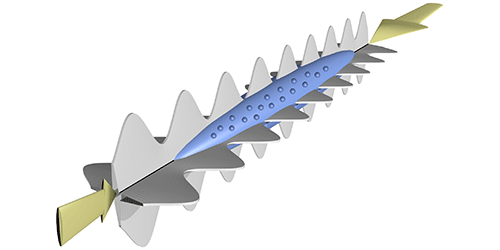A Crystal of Light and Atoms
Using an optical lattice, researchers can corral cold atoms into a crystalline array to simulate phenomena found in solids, such as magnetism and superconductivity. A theoretical proposal now shows how a crystalline phase could emerge without the artificial order imposed by a lattice. The scheme, which involves a uniform gas and lasers, mimics the spontaneous breaking of symmetry that occurs when a liquid becomes a solid, and it hosts wave-like lattice vibrations akin to phonons. The atom-light crystal may therefore offer a new way to simulate materials.
Helmut Ritsch and colleagues from the University of Innsbruck, Austria, considered a long, cigar-shaped Bose-Einstein condensate lying along the path of two counterpropagating laser beams. This setting allows for a dynamical atom-light interaction, in which the atoms move to the strongest regions in the optical field, and the refractive index is modified wherever the atoms bunch. The team found that, above a threshold laser density, this interaction causes the atoms to cluster into regularly spaced peaks. These peaks act as a diffraction grating for the beams, producing a periodic optical field, or a “light crystal.”
Such self-ordering has been predicted when the atoms and light are bounded within a cavity, but cavity walls cut off phonon-like excitations. Based on numerical simulations, Ritsch and colleagues suggest that their atom-light crystal would host a spectrum of phonon modes. These could be used to investigate phonon-mediated pairing interactions, like those that drive superconductivity in metals.
This research is published in Physical Review X.
–Jessica Thomas
Jessica Thomas is the Editor of Physics.





